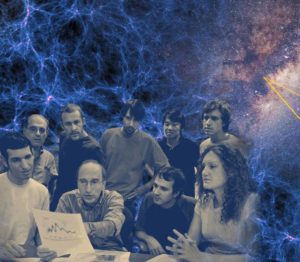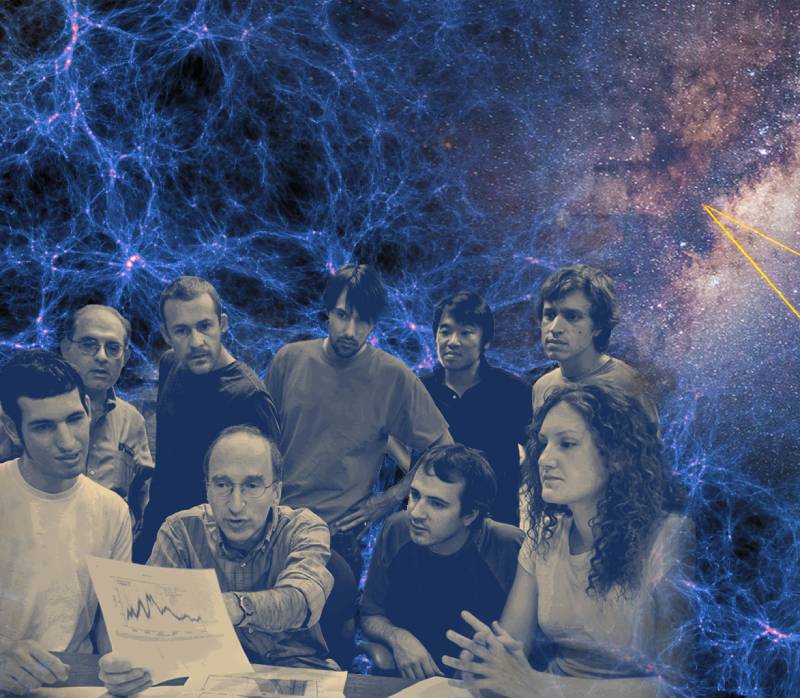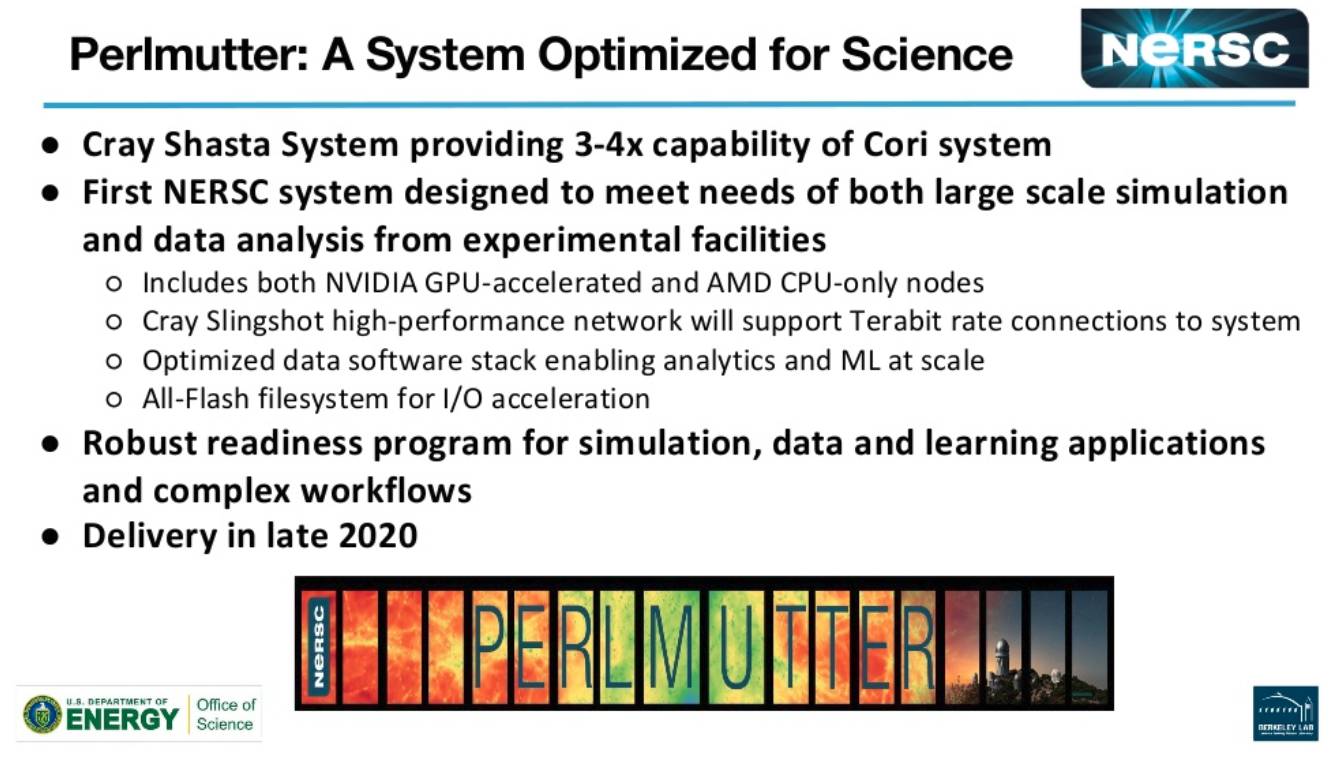 NERSC has unveiled the mural that will grace the cabinets of the Perlmutter supercomputer that will be installed at Berkeley Lab in 2020.
NERSC has unveiled the mural that will grace the cabinets of the Perlmutter supercomputer that will be installed at Berkeley Lab in 2020.
The mural pays tribute to the system’s namesake, Nobel Laureate Saul Perlmutter. The Berkeley Lab physicist led the team whose work at NERSC contributed to the Nobel prize-winning insight that the universe’s expansion is speeding up. The resulting efforts to explain this acceleration led to today’s model of a universe dominated by dark energy and dark matter.
 Perlmutter and his research team – including then post-doctoral researcher Peter Nugent – made the discovery by observing distant, very bright supernovae classified as Type Ia. Working at NERSC, the team used supercomputers to analyze and validate their observational data. This melding of computational science and cosmology sowed the seeds for more projects, establishing Berkeley Lab and NERSC as centers for the new field of computational cosmology and laying the foundations for today’s precision cosmology studies. Nugent is now department head for Computational Science in the Computational Research Division (CRD).
Perlmutter and his research team – including then post-doctoral researcher Peter Nugent – made the discovery by observing distant, very bright supernovae classified as Type Ia. Working at NERSC, the team used supercomputers to analyze and validate their observational data. This melding of computational science and cosmology sowed the seeds for more projects, establishing Berkeley Lab and NERSC as centers for the new field of computational cosmology and laying the foundations for today’s precision cosmology studies. Nugent is now department head for Computational Science in the Computational Research Division (CRD).
The mural alludes to both the team’s research as well as ongoing efforts to understand the dark universe it helped uncover. In the center, Perlmutter is shown surrounded by students and researchers, a nod to the team science behind the work. At the far right is the Keck observatory used by the team to discover and observe the bright, distant supernovae. Stretching across the background are several colorful views of a contemporary simulation featuring dark matter filaments.
The hydrodynamical simulation in the mural was performed by Berkeley Lab cosmologist Zarija Lukic using the Nyx code. The massively parallel program was executed on 524,288 processor cores of NERSC’s current flagship supercomputer, Cori. (By way of comparison, Perlmutter’s team was able to use 128 processors at once in what were breakthrough simulations at the time.) Andrew Myers of CRD created the visualizations. Susan Brand of IT’s Creative Services created the mural, which will stretch across the first row of the Cray system’s cabinets.
The Perlmutter system will be a pre-exascale Cray supercomputer code-named “Shasta.” The heterogeneous system will have both CPU-only and GPU-accelerated nodes with an expected performance triple that of Cori, NERSC’s current flagship supercomputing system.
Nick Wright from Lawrence Berkeley Lab gave this talk at the GPU Technology Conference.





